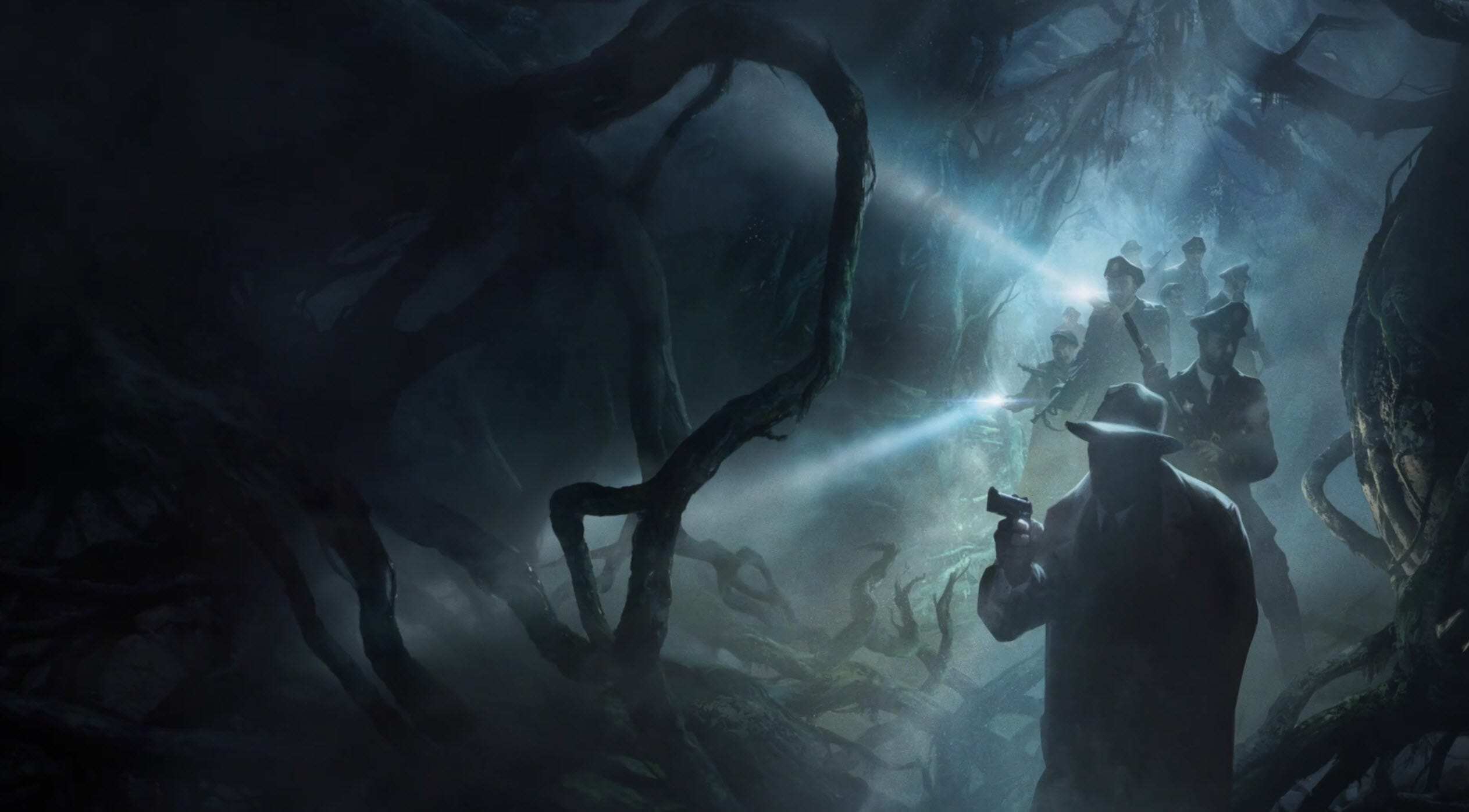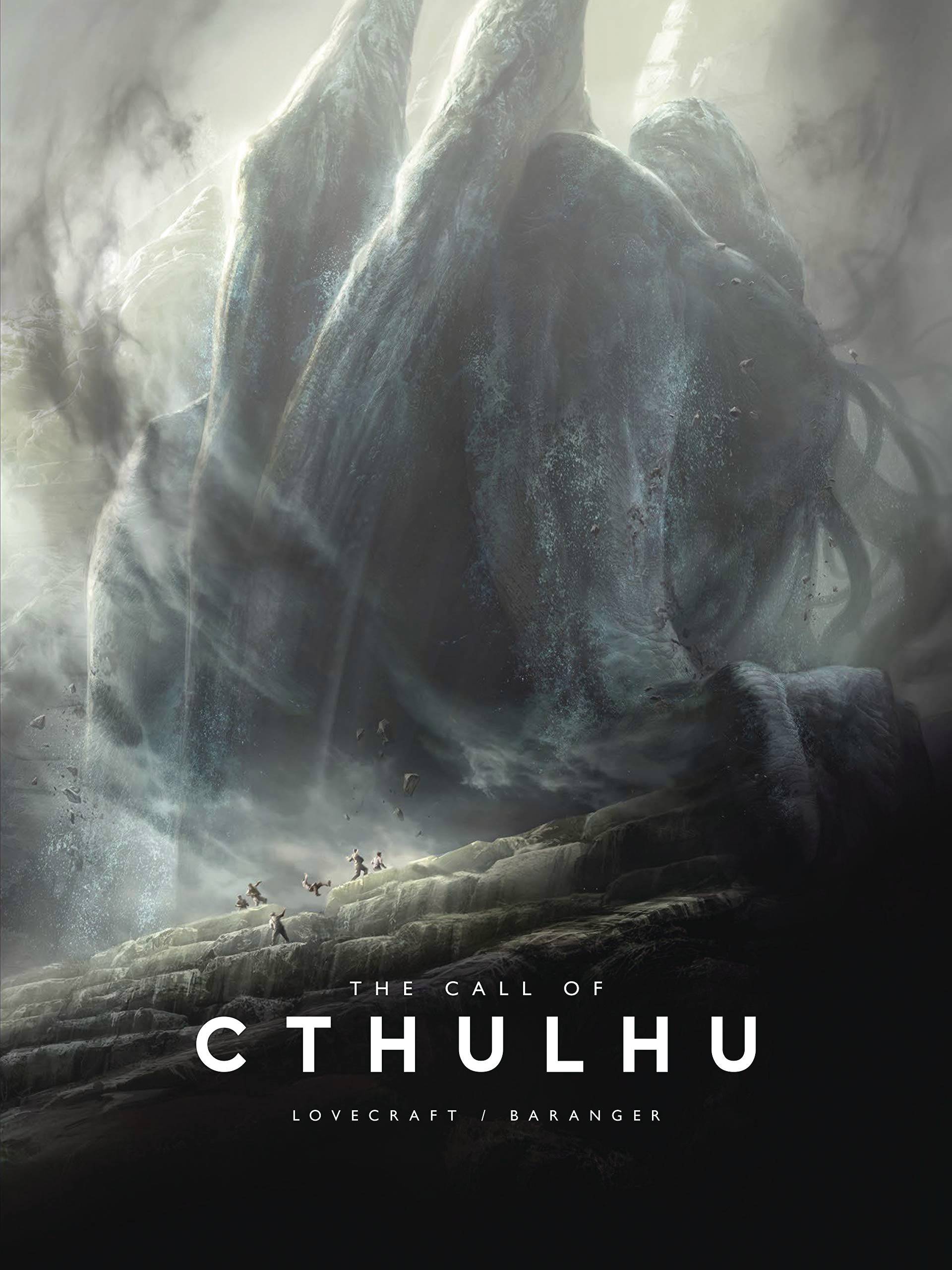
The prisoners identified the statuette as "great Cthulhu", and translated the chanted phrase as "In his house at R'lyeh dead Cthulhu waits dreaming." One particularly talkative cultist, known as "old Castro", named the center of the cult as Irem, the City of Pillars, in Arabia, and points out a relevant passage in the Necronomicon: Some day he would call, when the stars were ready, and the secret cult would always be waiting to liberate him. Those Old Ones were gone now, inside the earth and under the sea but their dead bodies had told their secrets in dreams to the first men, who formed a cult which had never died hidden in distant wastes and dark places all over the world until the time when the great priest Cthulhu, from his dark house in the mighty city of R'lyeh under the waters, should rise and bring the earth again beneath his sway. They worshipped, so they said, the Great Old Ones who lived ages before there were any men, and who came to the young world out of the sky. The police found the victims' "oddly marred" bodies being used in a ritual that centered on the statuette, about which roughly 100 men - all of a "very low, mixed-blooded, and mentally aberrant type" - were "braying, bellowing, and writhing", repeatedly chanting the phrase, " Ph'nglui mglw'nafh Cthulhu R'lyeh wgah'nagl fhtagn." Īfter killing five of the participants and arresting 47 others, Legrasse interrogated the prisoners and learned "the central idea of their loathsome faith": On November 1, 1907, Legrasse had led a party in search of several women and children who disappeared from a squatter community. This thing, which seemed instinct with a fearsome and unnatural malignancy, was of a somewhat bloated corpulence, and squatted evilly on a rectangular block or pedestal covered with undecipherable characters. It represented a monster of vaguely anthropoid outline, but with an octopus-like head whose face was a mass of feelers, a scaly, rubbery-looking body, prodigious claws on hind and fore feet, and long, narrow wings behind. Louis, Missouri, a New Orleans police official named John Raymond Legrasse had asked the assembled antiquarians to identify a statuette, made of an unidentifiable greenish-black stone, that "had been captured some months before in the wooded swamps south of New Orleans during a raid on a supposed voodoo meeting." The "statuette, idol, fetish, or whatever it was" closely resembled the Wilcox bas-relief: At the 1908 meeting of the American Archaeological Society in St. In the second part of the story, "The Tale of Inspector Legrasse", Angell's notes reveal that the professor had heard the word Cthulhu and seen a similar image much earlier.

In New York City, "hysterical Levantines" mob police in California, a Theosophist colony dons white robes to await a "glorious fulfillment." "The Tale of Inspector Legrasse" During the same period, Angell's research reveals, there were cases of "outre mental illnesses and outbreaks of group folly or mania" around the world - from Paris and London, Africa and South America, Haiti and the Philippines, western Ireland and India. Wilcox's dreams began on March 1, 1925, culminating in a period from March 23 until April 2 when Wilcox was in a state of delirium. The sculpture turns out to be the work of Henry Anthony Wilcox, a student at the Rhode Island School of Design who based the work on his dreams of "great Cyclopean cities of Titan blocks and sky-flung monoliths, all dripping with green ooze and sinister with latent horror." These images are associated in the dreams with the words Cthulhu and R'lyeh.

"The Horror in Clay" concerns a small bas-relief sculpture found among the papers, which the narrator describes: " my somewhat extravagant imagination yielded simultaneous pictures of an octopus, a dragon, and a human caricature A pulpy, tentacled head surmounted a grotesque and scaly body with rudimentary wings." In the text, Thurston recounts his discovery of notes left behind by his grand-uncle, George Gammell Angell, a prominent professor of Semitic languages at Brown University in Providence, Rhode Island, who died suddenly in "the winter of 1926–27" after being "jostled by a nautical-looking negro." "The Horror in Clay" "The Call of Cthulhu" is presented as a manuscript "found among the papers of the late Francis Wayland Thurston, of Boston".


 0 kommentar(er)
0 kommentar(er)
